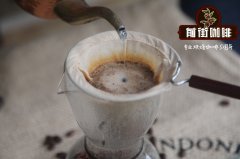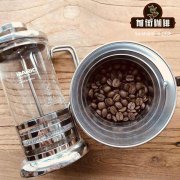Difference between Ugandan robusta coffee beans and Arabica beans _ classification of Ugandan coffee beans

Professional coffee knowledge exchange More coffee bean information Please pay attention to coffee workshop (Weixin Official Accounts cafe_style)
Arabica versus Robusta.
Arabica v.s Robusta
Arabica beans are longer, elliptical, and have a narrow, meandering split in the middle.
Romstar beans are more circular than the middle line of the split crack into a straight line.
Robustas Romsta "coffee canephora is very different from West Africa, it has a stronger constitution, it will grow to more than 10 meters, its roots are deeper, it likes low altitude and arabica seeds compared to the same area planting size, it will grow more beans. It has twice as much caffeine as Arabica. But what's interesting is that Arabica has twice as much cholesterol as Romstar.
Robustas
Romsta coffee, also known as large-leaf coffee, originated in Congo, Africa, disease resistance, insect resistance, tolerance of low temperature, easy to grow lowland coffee, taste bitter and not sour, suitable for making mixed coffee, accounting for 30% of the world's production in recent years has been widely cultivated.
Coffee canephora Pierre ex Froehner - robusta coffee, also known as Canephora coffee, Congo coffee tree, origin West Africa (West Africa), plant characteristics similar to Arabica coffee, leaf tip shape, leaf length 15-30 X 5 - 15 cm, 6 petals, mainly produced in Uganda coffee beans and Indonesia Java, it is more resistant to high temperature, pest resistance, suitable for lowland cultivation.
Arabica is also known as Arabic coffee.
Originated in Abyssinia (now Ethiopia), there are many improved species around the world today, which accounts for about 2/3 of coffee production, its characteristics are fragrant, taste good, but the growth environment is more strict and not suitable for growth in high temperature, low temperature, rainy, less rain, its economic value is extremely high.
Robustas heard it, and many people rejected it before they had tasted it. First of all, people think,"Is it worth that much when you pay? "
Many years ago, it and Arabica had already fought, and thus factions were formed. Even if they did not raise their faces, there were still differences.
Robustas Romsta "is here because you want to know how it feels, not the quality of the bean, and it can certainly give you something, but you have to know it first!
Where is it different? From the very beginning it has had a different origin and tree species, and has been a different system for a long time, for example {apples and pears are both fruits but are not the same, for example, Arabica coffee has 44 chromosomes, while Robasta coffee has 22 chromosomes, which cannot be hybridized but are both members of the coffee family.
Coffee arabica Arabica comes from Ethiopia, Arabica It also has many branches The most famous is Catuai and Caturra Their hybrid is Bourbon /Pacas and Maragogype Because it is delicate, it needs more nutrients/soil/sunlight and shade, but the growth environment is more strict and not suitable for growing in high temperature, low temperature, rainy, rainy areas, its economic value is higher, but also needs more care.
Coffee tree is a perennial evergreen tree with developed roots. Arabica coffee can reach 5 meters when it is not pruned. The branches are opposite and extend laterally. The leaves are born on short stem branches. The petiole is short. The leaves are elliptic and pointed. The color is bright green and shiny. The leaves are 10 - 15 cm long and elliptic. The width is about 6 cm. The leaves are wavy. The tips of the leaves are white. They have jasmine fragrance. The corolla is 1 cm long. The petals are 5 pieces. With stamens 5 and pistil 1, stigma as two, pollination, 3~4 smallpox is withered, fruit was dark green, mature for deep red, it has the reputation of cherry.
The fruit of coffee is formed by the outer skin (skin), pulp (pulp), mucilage (mucilage), endocarp (pericarp), silver skin (silverskin) and beans (green coffee) inside. The seeds are the central part of the fruit. Each pulp has a pair of semicircular seeds, which is the part we use. Matures 7-9 months after flowering, and the pericarp turns black when dry. The seeds are 8.5 - 12.5 mm long, deeply grooved, contain green keratinized endosperm and embryos, polyembryony, and contain about 2,500 seeds per kilogram of dry weight.
In Asia, 4-5 years old coffee trees will bloom, flowering about February-March each year, coffee flowers in appearance and smell similar to jasmine, flowering closely on coffee branches in clusters. White petals and light jasmine fragrance, flowering is very short about 3-5 days. The immature coffee fruit is green, and after 6-7 months of maturity, the mature fruit skin is red. When the coffee fruit ripens, it is harvested immediately, from early harvest to full harvest time of up to 4-5 months, a typical Arabica coffee tree produces less than 5 kg of fruit in a year, can be made into about 1 kg of coffee beans.
Other coffee tree species include coffea liberica, also known as the big coffee tree, discovered in Libya in 1843 and accounting for about 1 percent of commercial cultivation, coffea deweverei, or the more famous Coffea excelsa, both of which have the qualities of Robasta but usually taste less good. In addition, wild coffee has Coffee fadenii, Coffee mongensis.
Qianjie Coffee: Guangzhou's baking shop, small store but a variety of beans, can find a variety of famous beans, but also provide online store services. https://shop104210103.taobao.com
Important Notice :
前街咖啡 FrontStreet Coffee has moved to new addredd:
FrontStreet Coffee Address: 315,Donghua East Road,GuangZhou
Tel:020 38364473
- Prev

Does Ugandan coffee taste good? how do Ugandan coffee beans taste? how much is a pack of Ugandan coffee beans?
Professional coffee knowledge exchange more coffee bean information please follow the coffee workshop (Wechat official account cafe_style) Uganda coffee bean Chinoni Kinone washing plant (Kinone) the washing plant is operated by the Bukonzo Organic Farmers Co-operative (Bukonzo Organic Farmers Co-operative). Bukangzo was founded in 2009, raw beans from Luwenzori (
- Next

Does Ugandan coffee taste good? Ugandan coffee flavor characteristics _ how much is a pack of Ugandan coffee beans
Professional coffee knowledge exchange more coffee bean information Please pay attention to the coffee workshop (Wechat official account cafe_style) Ugandan coffee beans have not been famous in China, but they have already gained a certain reputation in the international community. In the past, Ugandan coffee was mainly robusta beans, but this year, in order to change the income of coffee exports, the Ugandan government began to support curry farmers to grow and cultivate ah.
Related
- Detailed explanation of Jadeite planting Land in Panamanian Jadeite Manor introduction to the grading system of Jadeite competitive bidding, Red bid, Green bid and Rose Summer
- Story of Coffee planting in Brenka region of Costa Rica Stonehenge Manor anaerobic heavy honey treatment of flavor mouth
- What's on the barrel of Blue Mountain Coffee beans?
- Can American coffee also pull flowers? How to use hot American style to pull out a good-looking pattern?
- Can you make a cold extract with coffee beans? What is the right proportion for cold-extracted coffee formula?
- Indonesian PWN Gold Mandrine Coffee Origin Features Flavor How to Chong? Mandolin coffee is American.
- A brief introduction to the flavor characteristics of Brazilian yellow bourbon coffee beans
- What is the effect of different water quality on the flavor of cold-extracted coffee? What kind of water is best for brewing coffee?
- Why do you think of Rose Summer whenever you mention Panamanian coffee?
- Introduction to the characteristics of authentic blue mountain coffee bean producing areas? What is the CIB Coffee Authority in Jamaica?

